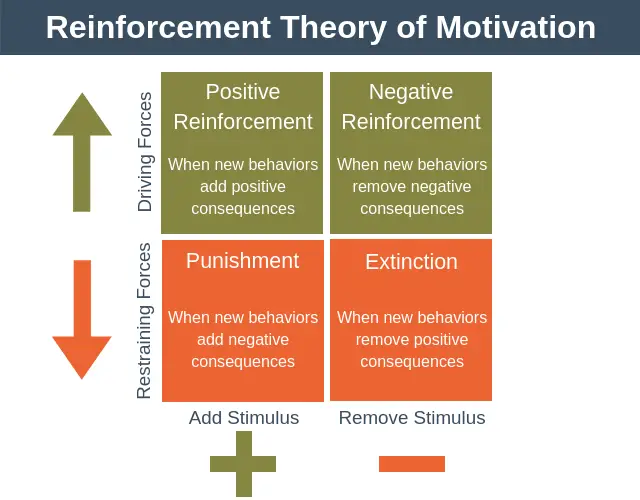

As a child you probably tried out a number of behaviors and learned from their consequences.įor example, if when you were younger you tried smoking at school, and the chief consequence was that you got in with the crowd you always wanted to hang out with, you would have been positively reinforced (i.e., rewarded) and would be likely to repeat the behavior. We can all think of examples of how our own behavior has been affected by reinforcers and punishers. Punishers: Responses from the environment that decrease the likelihood of a behavior being repeated.Reinforcers can be either positive or negative. Reinforcers: Responses from the environment that increase the probability of a behavior being repeated.

Neutral operants: responses from the environment that neither increase nor decrease the probability of a behavior being repeated.Skinner identified three types of responses, or operant, that can follow behavior.

An animal can be rewarded or punished for engaging in certain behaviors, such as lever pressing (for rats) or key pecking (for pigeons). Skinner (1948) studied operant conditioning by conducting experiments using animals which he placed in a ' Skinner Box' which was similar to Thorndike’s puzzle box.Ī Skinner box, also known as an operant conditioning chamber, is a device used to objectively record an animal's behavior in a compressed time frame. behavior which is reinforced tends to be repeated (i.e., strengthened) behavior which is not reinforced tends to die out-or be extinguished (i.e., weakened). Skinner introduced a new term into the Law of Effect - Reinforcement. According to this principle, behavior that is followed by pleasant consequences is likely to be repeated, and behavior followed by unpleasant consequences is less likely to be repeated. Skinner is regarded as the father of Operant Conditioning, but his work was based on Thorndike’s (1898) law of effect.


 0 kommentar(er)
0 kommentar(er)
